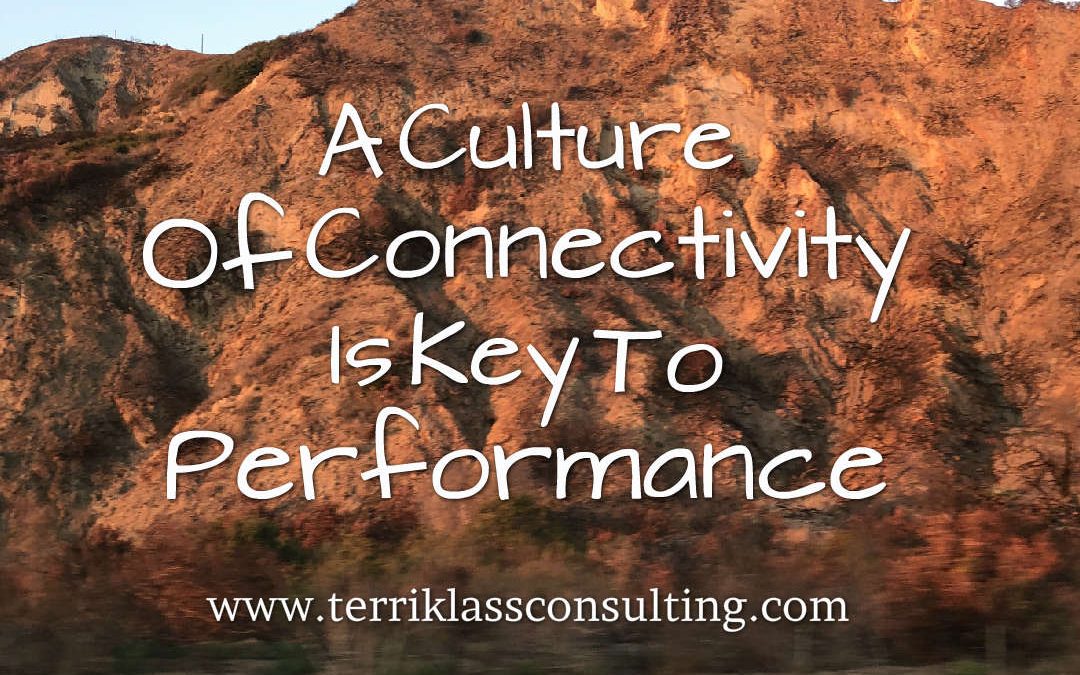I’ve been working with several teams this past six months that are having a tough time coming together in a unified way. It’s not that team members are purposefully going in different directions but rather there is a missing strand of connectivity. There is also an absence of camaraderie and respect for different views.
We all see this disconnect at times in our jobs. Since our workplaces are filled with so many daily interactions with different people, there is the potential to overlook the importance of meaningful connections. We see this when we work alongside colleagues to create important deliverables. We feel it when we participate in meetings to make decisions for the best direction we should take. A lack of connectivity can take place when we coach others to reach their potential as well as when we are coached to grow our own careers. A disconnect can even emerge when we make presentations to explain new concepts and trends.
Why are we sometimes missing the mark in forming connections with team members?
To create teams that can perform at their highest levels we need to build connected relationships. We need to see how much we depend on one another to get our jobs done well.
[Tweet “Connected relationships are key to a team performing at its highest level.”]
Here are six secrets to creating a culture of connectivity:
1. Commit to building relationships with every interaction.
Every time we connect with others it is a moment of truth. That means we need to cultivate deeper relationships when we work with others. Make sure we are clear in our communication and share complete information so everyone can work with the same data. If someone has a different opinion, listen respectfully. Validate input from team members. Help each person see their value in contributing.
2. Be a trustworthy team member.
To lead in a culture of connectivity there needs to be a high level of trust amongst team members.
- Don’t talk negatively behind people’s backs
- Own up to your mistakes
- Never betray a confidence shared with you
- Showcase the strengths of others by asking them for their expertise
3. Become curious about people on your team.
When we become interested in what makes our team members tick we begin to build a deeper connection with them. In a recent program team members shared some information about their childhood that helped others understand them better. Ask questions and people will open up about who they really are.
4. Don’t be afraid of conflict.
If we really want to create a culture of connectivity we need to welcome ways to deal with healthy conflict. Healthy conflict ultimately leads to greater solutions if it is handled well.
- Listen strategically to understand completely during team meetings
- Don’t interrupt until your team member is finished explaining their ideas
- Ask questions to clarify points
- Never bully a team member to compromise
- Try to pull different opinions together to create a larger solution
[Tweet “A culture of connectivity includes healthy conflict.”]
5. Follow-through on what you say you will do.
To depend on one another, team members must be reliable. That means completing your piece of the deliverable with quality in a timely manner. It also means offering your suggestions to enhance the outcome of a project if your expertise is needed. Be there for your team members when they are counting on you.
[Tweet “Team members hold themselves and others accountable in a culture of connectivity.”]
6. Lead with compassion.
Allow your heart and mind to be in sync when decisions are made and actions are taken. With one team I worked with some of the members were feeling isolated so it was essential for the others to draw them in and reach out for their input. Having concern for one another is how we connect.
What are your secrets to creating a culture of connectivity?
Please let me know if I can help you or your team build a culture of connectivity and trust.



I love all of your points, Terri. I’ve also found that when leaders send a consistent message with both their actions and words, it creates trust. I’ve found that when leaders or team members are not consistent in the way they respond and think, it creates an atmosphere of confusion, and ultimately, distrust. When there is no trust, there is connectivity…
I agree that being consistent in our communication and actions is also very important to cultivating a culture of connectivity. When team members aren’t consistent it is difficult to form trusting work relationships because we will never be sure of their reactions. Counting on our colleagues to be there for us even if mistakes are made can be critical in forming connected relationships.
Thanks for the great additions LaRae!
Critical! Particularly appreciate your point about healthy conflict. Too often people sit in meetings (and other convos) waiting to speak, push their perspective, and convince others why they’re right. Seeking to understand is a key part of building connectivity. Not one of us is a one woman or one man show.
Thanks for sharing! I’ll do the same in my community!
Alli
Healthy conflict is so very important because it leads to better and more complete outcomes where all team members feel safe to share their perspectives. It is only when people avoid conflict or use intimidation to get their way that leads to a disconnected team.
Thanks so much Alli for your insights! Appreciate it!